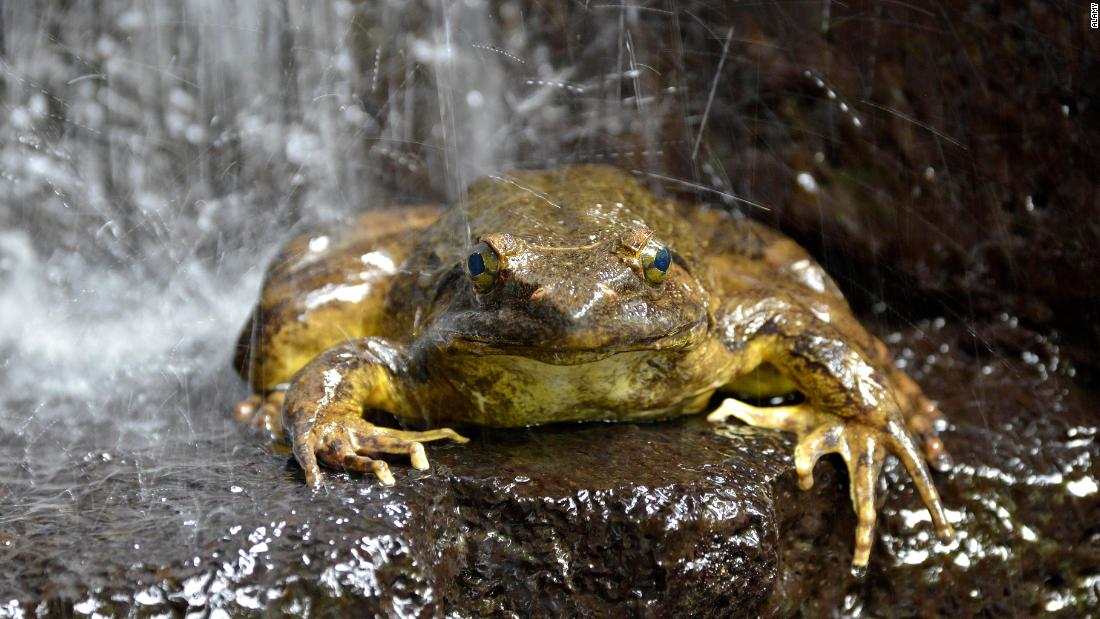[ad_1]
The heavy labor that the frogs do could explain their size, scientists believe.
The researchers, led by a team from Berlin’s Natural History Museum (Museum für Naturkunde), found that the frogs altered existing natural ponds or created new nests in small ponds, about 3 feet wide and 4 inches deep, along riverbanks in Cameroon.
“They sometimes move rocks weighing up to 2 kg (4.4 pounds). We think that this laborious activity may explain why adult frogs need to be giants in the first place,” said Marvin Schäfer, lead author of the study, in a press release.
As well as being strong, the frogs have also proved themselves to be anxious parents, nurturing their young in ponds away from torrent rivers and potential predators.
“Giant frogs are the first African amphibian species now known to actively prepare or even construct breeding sites for their offspring,” said Mark-Oliver Rödel, project leader and president of conservation group Frogs & Friends, in a press release. “This shows how little we know about the biology, even of some of the most spectacular creatures of our planet.”
Shrinking habitat, exploitation of natural resources, climate change and pollution are the main drivers of species loss and are threatening more than 40% of amphibians, a report from the Intergovernmental Science-Policy Platform on Biodiversity and Ecosystem Services (IPBES) found in May.
CNN’s Isabelle Gerretsen contributed to this report.
[ad_2]
Source link


